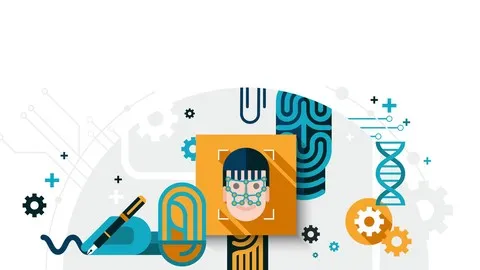
Introduction to Computer Vision 
This course, Introduction to Computer Vision, is designed to introduce the audience to the fundamentals of computer vision. It will cover topics such as camera model, calibration, epipolar geometry, object and texture representation, light and shading, colour, and the use of CNNs for object detection/classification and depth estimation. Prerequisites include basic calculus, linear algebra, probability and statistics, and some programming skills. Industry support includes Samsung, Qualcomm, LG, TI, Google, Microsoft, Amazon, Facebook and many more. ▼
ADVERTISEMENT
Course Feature
![]() Cost:
Cost:
Free
![]() Provider:
Provider:
Swayam
![]() Certificate:
Certificate:
Paid Certification
![]() Language:
Language:
English
![]() Start Date:
Start Date:
29th Jul, 2019
Course Overview
❗The content presented here is sourced directly from Swayam platform. For comprehensive course details, including enrollment information, simply click on the 'Go to class' link on our website.
Updated in [April 29th, 2023]
This course, Introduction to Computer Vision, provides an introduction to the subject of computer vision. Participants will learn about the camera model, camera calibration, and epipolar geometry concepts. Object and texture representation, the effect of light and shading, and colour will also be discussed. Additionally, the use of Convolutional Neural Networks (CNNs) in vision will be taught, particularly for object detection/classification and depth estimation.
This course is intended for any interested learners. Prerequisites include basic calculus, linear algebra, basic probability and statistics, and some programming skills such as entry-level Matlab/python and the ability to work in the Linux environment.
The course is supported by industry leaders such as Samsung, Qualcomm, LG, TI, Google, Microsoft, Amazon, and Facebook.
[Applications]
Those who have completed this course can apply their knowledge to a variety of computer vision applications. They can use their understanding of camera models, calibration, and epipolar geometry to develop algorithms for 3D reconstruction and object tracking. They can also use their knowledge of object and texture representation to develop algorithms for object detection and classification. Furthermore, they can use their knowledge of CNNs to develop algorithms for depth estimation and image segmentation. Finally, they can use their knowledge of light and shading and colour to develop algorithms for image enhancement and colour correction.
[Career Paths]
1. Computer Vision Engineer: Computer vision engineers are responsible for developing and implementing computer vision algorithms and systems. They use machine learning and deep learning techniques to create systems that can detect, recognize, and classify objects in images and videos. They also develop systems that can track objects in real-time and generate 3D models from images. The development of autonomous vehicles and robots is heavily reliant on computer vision engineers.
2. Robotics Engineer: Robotics engineers are responsible for designing, building, and programming robots. They use computer vision algorithms to enable robots to perceive their environment and interact with it. Robotics engineers also develop algorithms for navigation, motion planning, and object manipulation.
3. Autonomous Vehicle Engineer: Autonomous vehicle engineers are responsible for developing and implementing algorithms for autonomous vehicles. They use computer vision algorithms to enable autonomous vehicles to detect and recognize objects in their environment. Autonomous vehicle engineers also develop algorithms for navigation, motion planning, and object manipulation.
4. Machine Learning Engineer: Machine learning engineers are responsible for developing and implementing machine learning algorithms. They use computer vision algorithms to enable machines to detect, recognize, and classify objects in images and videos. They also develop algorithms for navigation, motion planning, and object manipulation.
[Education Paths]
1. Bachelor of Science in Computer Vision: This degree program focuses on the development of computer vision algorithms and systems. It covers topics such as image processing, machine learning, computer vision, and robotics. Students will learn how to design and implement computer vision systems, as well as how to use them in real-world applications. This degree is becoming increasingly popular as the demand for computer vision experts grows.
2. Master of Science in Artificial Intelligence: This degree program focuses on the development of artificial intelligence algorithms and systems. It covers topics such as machine learning, natural language processing, computer vision, and robotics. Students will learn how to design and implement AI systems, as well as how to use them in real-world applications. This degree is becoming increasingly popular as the demand for AI experts grows.
3. Doctor of Philosophy in Computer Science: This degree program focuses on the development of computer science algorithms and systems. It covers topics such as algorithms, data structures, computer networks, computer vision, and robotics. Students will learn how to design and implement computer science systems, as well as how to use them in real-world applications. This degree is becoming increasingly popular as the demand for computer science experts grows.
4. Master of Science in Robotics: This degree program focuses on the development of robotics algorithms and systems. It covers topics such as machine learning, computer vision, artificial intelligence, and robotics. Students will learn how to design and implement robotics systems, as well as how to use them in real-world applications. This degree is becoming increasingly popular as the demand for robotics experts grows.
Course Provider

Provider Swayam's Stats at AZClass
Discussion and Reviews
0.0 (Based on 0 reviews)
Explore Similar Online Courses

Next Steps in Software Development on SAP HANA

VMware vSphere 65 Security

Python for Informatics: Exploring Information

Social Network Analysis

Introduction to Systematic Review and Meta-Analysis

The Analytics Edge

DCO042 - Python For Informatics

Causal Diagrams: Draw Your Assumptions Before Your Conclusions

Whole genome sequencing of bacterial genomes - tools and applications

Learn Computer Vision with OpenCV Library using Python

Build an Object Detection Model with Python


Start your review of Introduction to Computer Vision